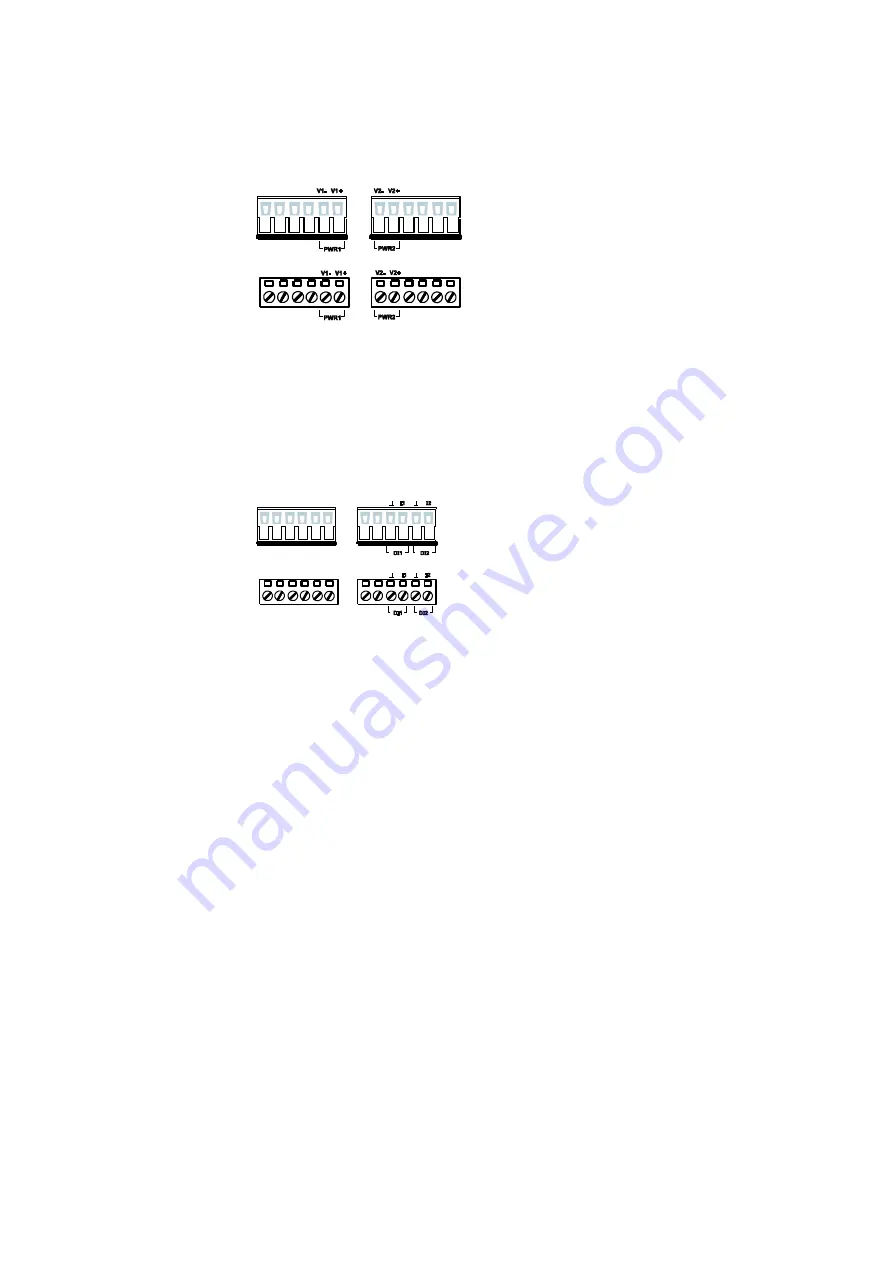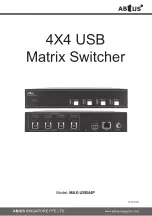
- 8 -
Wiring the Redundant Power Inputs
IE-SW-PL16M has two sets of power inputs—power input 1 and power input
2.The top two contacts and the bottom two contacts of the 6-pin terminal
block connector on Ethernet Switch top panel are used for Ethernet Switch
two digital inputs. The top and front views of one of the terminal block
connectors are shown here.
STEP 1
: Insert the
negative/positive DC wires into
the V-/V+ terminals, respectively.
STEP 2
: To keep the DC wires
from pulling loose, use a small
flat-blade screwdriver to tighten
the wire-clamp screws on the front
of the terminal block connector.
STEP 3
: Insert the plastic terminal
block connector prongs into the
terminal block receptor, which is
located on the IE-SW-PL16M top
panel.
Wiring the Digital Inputs
IE-SW-PL16M has two sets of digital inputs, DI 1 and DI 2. Each DI consists
of two contacts of the 6-pin terminal block connector on Ethernet Switch top
panel, which are used for Ethernet Switch two DC inputs. The top and front
views of one of the terminal block connectors are shown here.
STEP 1
: Insert the negative
(ground)/positive DI wires into the
┴
/I1 terminals, respectively.
STEP 2
: To keep the DI wires from
pulling loose, use a small flat-blade
screwdriver to tighten the wire-clamp
screws on the front of the terminal
block connector.
STEP 3
: Insert the plastic terminal
block connector prongs into the
terminal block receptor, which is
located on the IE-SW-PL16M top
panel.
Communication Connections
All models of IE-SW-PL16M have one RJ45 console port (RS-232 interface),
between 14 and 16 10/100BaseTX Ethernet ports and 0 (zero) or 2 100BaseFX
(SC/ST-type connector) fiber ports
In this section, we present two types of diagrams—Pinout Diagrams and
Cable Wiring Diagrams—to convey information about the ports and the
cables used to connect IE-SW-PL16M Series to other devices:
Pinouts
—The meaning of the “Pinouts” diagrams is straightforward. The
diagrams simply display the type of signal passing through each of the port’s
pins.

































